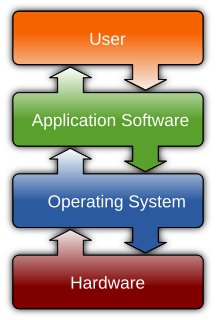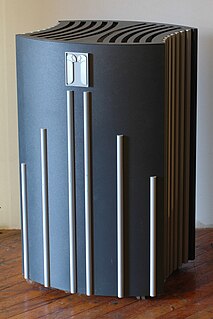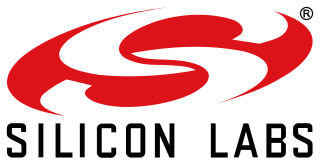
Software is a collection of instructions and data that tell the computer how to work. This is in contrast to physical hardware, from which the system is built and actually performs the work. In computer science and software engineering, computer software is all information processed by computer systems, including programs and data. Computer software includes computer programs, libraries and related non-executable data, such as online documentation or digital media. Computer hardware and software require each other and neither can be realistically used on its own.

A computer programmer, sometimes called a software developer, a programmer or more recently a coder, is a person who creates computer software. The term computer programmer can refer to a specialist in one area of computers, or to a generalist who writes code for many kinds of software.

An embedded system is a computer system—a combination of a computer processor, computer memory, and input/output peripheral devices—that has a dedicated function within a larger mechanical or electrical system. It is embedded as part of a complete device often including electrical or electronic hardware and mechanical parts. Because an embedded system typically controls physical operations of the machine that it is embedded within, it often has real-time computing constraints. Embedded systems control many devices in common use today. In 2009 it was estimated that ninety-eight percent of all microprocessors manufactured were used in embedded systems.
Mentor Graphics is a US-based electronic design automation (EDA) multinational corporation for electrical engineering and electronics, headquartered in Wilsonville, Oregon. The company was acquired by Siemens in 2017 and is now known as Siemens EDA.
Synopsys is an American electronic design automation company that focuses on silicon design and verification, silicon intellectual property and software security and quality. Products include logic synthesis, behavioral synthesis, place and route, static timing analysis, formal verification, hardware description language simulators, and transistor-level circuit simulation. The simulators include development and debugging environments that assist in the design of the logic for chips and computer systems. In recent years, Synopsys has expanded its products and services to include application security testing. Their technology is present in self-driving cars, artificial intelligence, and internet of things consumer products.
Magma Design Automation was a software company in the electronic design automation (EDA) industry. The company was founded in 1997 and maintained headquarters in San Jose, California, with facilities throughout North America, Europe, Japan, Asia and India. Magma software products were used in major elements of Integrated circuit design, including: synthesis, placement, routing, power management, circuit simulation, verification and analog/mixed-signal design.
JTAG is an industry standard for verifying designs and testing printed circuit boards after manufacture.
Lexra was a semiconductor intellectual property core company based in Waltham, Massachusetts. It was founded in 1997. Lexra developed and licensed semiconductor intellectual property cores that implemented the MIPS I architecture, except for the four unaligned load and store instructions.
Florian Müller is an app developer and an intellectual property activist. He consulted for Microsoft and writes the FOSSPatents blog about patent and copyright issues. From 1985 to 1998, he was a computer magazine writer and consultant for companies, helping with collaborations between software companies. In 2004 he founded the NoSoftwarePatents campaign and in 2007 he provided some consultancy in relation to football policy.

In integrated circuit design, hardware emulation is the process of imitating the behavior of one or more pieces of hardware with another piece of hardware, typically a special purpose emulation system. The emulation model is usually based on a hardware description language source code, which is compiled into the format used by emulation system. The goal is normally debugging and functional verification of the system being designed. Often an emulator is fast enough to be plugged into a working target system in place of a yet-to-be-built chip, so the whole system can be debugged with live data. This is a specific case of in-circuit emulation.
Post-silicon validation and debug is the last step in the development of a semiconductor integrated circuit.
SEGGER Microcontroller, founded in 1992, is a private company active in the industry of Embedded Systems. It provides software libraries plus programming and development tools. SEGGER produces debug probes, with accompanying debugger and performance analyzer software, plus communication and security software. The company is headquartered in Monheim am Rhein, Germany with US offices in Gardner, Massachusetts and Milpitas, California.
Field-programmable gate array prototyping, also referred to as FPGA-based prototyping, ASIC prototyping or system-on-chip (SoC) prototyping, is the method to prototype system-on-chip and application-specific integrated circuit designs on FPGAs for hardware verification and early software development.

Silicon Laboratories, Inc. is a fabless global technology company that designs and manufactures semiconductors, other silicon devices and software, which it sells to electronics design engineers and manufacturers in Internet of Things (IoT) infrastructure, industrial automation, consumer and automotive markets worldwide.
Archimedes is a TCAD package for use by engineers to design and simulate submicron and mesoscopic semiconductor devices. Archimedes is free software and thus it can be copied, modified and redistributed under GPL. Archimedes uses the Ensemble Monte Carlo method and is able to simulate physics effects and transport for electrons and heavy holes in Silicon, Germanium, GaAs, InSb, AlSb, AlAs, AlxInxSb, AlxIn(1-x)Sb, AlP, AlSb, GaP, GaSb, InP and their compounds, along with Silicon Oxide. Applied and/or self-consistent electrostatic and magnetic fields are handled with the Poisson and Faraday equations.

Yeti Cycles is an American bicycle manufacturer located in Golden, Colorado.

Ami Miron is an American Israeli entrepreneur and technology developer specializing in consumer electronics, the Internet, and television. He developed and patented the first commercially successful Picture In Picture (PIP) for Philips Electronics. Miron also worked to solve the problem of ghost images on television and led the development of the first high-definition television (HDTV) system in the U.S. He received two Technology and Engineering Emmy Awards for these last two innovations.
C8051 is a microcontroller (MCU) core produced by Silicon Laboratories, Inc. It is based on a patented implementation of the 8051 instruction set architecture.
A field-programmable object array (FPOA) is a class of programmable logic device designed to be modified or programmed after manufacturing. They are designed to bridge the gap between ASIC and FPGA. They contain a grid of programmable silicon objects. Arrix range of FPOA contained three types of silicon objects: arithmetic logic units (ALUs), register files (RFs) and multiply-and-accumulate units (MACs). Both the objects and interconnects are programmable.

Andes Technology Corporation is a Taiwanese supplier of 32/64-bit embedded CPU cores and a founding Premier member of RISC-V International Association. It focuses on the embedded market and delivers CPU cores with integrated development environment and associated software and hardware for SoC development. Andes is ranked the fifth IP company in the world. More than 5 billion units of SoC embedded with AndesCore have shipped (2019).






